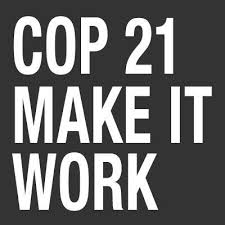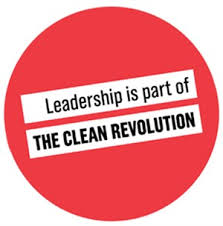

Energy
Companies face hurdles to address climate risks
A growing number of major global companies are assessing the risks posed by climate change, but many still struggle to translate climate data into actions to improve resilience, according to a new report by the Center for Climate and Energy Solutions (C2ES).
“Weathering the Next Storm: A Closer Look at Business Resilience,” released yesterday at Climate Week NYC, examines how companies are preparing for climate risks and what is keeping them from doing more. C2ES also suggests companies and cities collaborate to strengthen climate resilience
Most major companies – 91 of the 100 in the Standard and Poor’s Global 100 Index – recognize climate risks to their business. A growing number – at least 39 percent – are conducting vulnerability assessments, and 30 percent use climate-specific models, according to the report.
But there’s no one-size-fits-all method to assess climate risks, and companies struggle to connect the dots between global data projecting long-term impacts and location-specific, short-term business decisions.
“Governments and companies must take action to reduce the emissions contributing to climate change,” said C2ES President Bob Perciasepe. “But climate change is already imposing real costs on companies and communities, and they’ll need to work together to increase resilience.”
“Climate impacts – rising sea level, more frequent and intense heat waves, flooding and drought, and other extreme weather events – affect a company’s facilities, operations, supply and distribution chains, employees and customers,’’ said report co-author Katy Maher. “Many companies are taking steps to better understand their risks, but they face challenges to building climate resilience.”
The report synthesizes findings from public disclosures by S&P Global 100 companies, in-depth interviews with more than 50 companies, and workshops with business leaders, government officials, academics and other stakeholders. It expands on a 2013 C2ES report that provided a baseline for how companies were assessing their climate vulnerabilities. Funding for the multi-year C2ES research initiative on business resilience is provided by Bank of America.
The report was released at a Climate Week NYC event featuring Amy Luers, assistant director of climate resilience and information at the White House Office of Science and Technology Policy; Alex Liftman, Bank of America’s global environmental executive; Roberta Barbieri, global environmental director for Diageo; Jay Bruns, vice president of public policy at The Hartford; and Melissa Lavinson, corporate sustainability officer for PG&E.
Key Findings
Most major companies recognize and report climate risks.
Ninety-one of the 100 companies in the S&P Global 100 Index see extreme weather and climate change impacts as current or future risks to their business. Most of the companies (84) discuss climate risk concerns in CDP questionnaires. Fewer companies do so in their sustainability reports (47) or financial filings (40), but reporting has increased slightly since 2013.
Companies worry about climate impacts beyond their facilities.
Almost all companies interviewed expressed concern about impacts to their supply chains. As one company noted, “You are only as resilient as your weakest link, so it is important to identify where that link is.” They also worry about public roads and other infrastructure, and access to electricity and water.
There isn’t one right way to assess and manage climate risks.
Many companies view climate change as a “threat multiplier” that exacerbates existing risks. This puts climate change into a familiar context, but could cause companies to overlook or underestimate threats. Some companies examine risks across their enterprise, while others focus on specific facilities, regions, or threats – such as climate impacts on water supply, which was a key concern.
Companies struggle to translate long-term, global climate data into short-term, local risks.
Despite growing access to climate-related data and tools, companies say they need “actionable science” that helps them understand locally-specific risks or risk scenarios. They also struggle to incorporate long-term climate risks into short-term business decisions.
C2ES Recommendations
– Companies can start with a limited-scope vulnerability assessment – focusing, for example, on the most critical parts of the business – to raise internal awareness of climate risks.
– Companies should facilitate regular communication across departments involved in climate risk and resilience — including sustainability, risk management, operations, and finance – and consider whether to change planning horizons to better incorporate climate risks.
– Companies, state and city governments, non-profits and local experts should explore partnerships to analyze data, evaluate climate risks, do cost-benefit studies, and implement resilience planning.
– Not all companies report climate risk and the degree of detail varies significantly among those that do. Governments should look for ways to streamline climate risk reporting and provide more guidance on how to incorporate climate risks into financial disclosures.
– Governments should improve public infrastructure and provide opportunities for the private sector to contribute to resilience planning efforts and investments.


 Environment10 months ago
Environment10 months agoAre Polymer Banknotes: an Eco-Friendly Trend or a Groundswell?

 Environment11 months ago
Environment11 months agoEco-Friendly Home Improvements: Top 7 Upgrades for 2025

 Features9 months ago
Features9 months agoEco-Friendly Cryptocurrencies: Sustainable Investment Choices

 Features10 months ago
Features10 months agoEco-Friendly Crypto Traders Must Find the Right Exchange
























